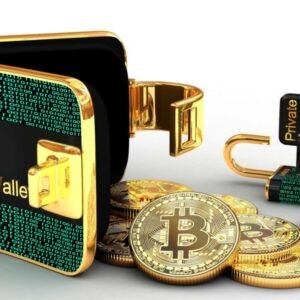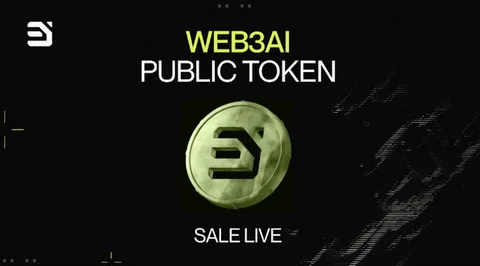The rise of digital payment platforms has revolutionized how individuals send and receive money. Peer-to-Peer (P2P) platforms, such as Venmo, PayPal, and Zelle, allow for fast, seamless transactions between users, often without the need for traditional banking intermediaries.
However, the simplicity and convenience of P2P systems also present unique opportunities for scams and fraudulent activities.
This post explores the risks associated with P2P systems, highlights common types of scams, and offers actionable prevention tips to help users navigate this digital landscape safely.

What is a P2P System?
P2P platforms are digital services that allow individuals to transfer money directly to one another without needing a centralized authority like a bank or financial institution. These systems use encryption, blockchain technology, or other security protocols to authenticate users and ensure that money is sent securely.
While originally popularized by cryptocurrency networks like Bitcoin, P2P payments have become mainstream, with millions of users relying on them for everyday transactions.
The Growth of P2P Platforms and Their Vulnerabilities
In 2023, P2P payment platforms saw an exponential increase in usage. A large number of users prefer these platforms because of their ease of use, availability across multiple devices, and low or no fees for standard transactions. As these systems grow in popularity, so do the opportunities for scammers to exploit users.
Despite their ease of use, P2P platforms carry inherent risks. The scams in these systems usually rely on the decentralized nature of P2P, meaning users are responsible for ensuring the authenticity of the transactions they engage in.
Unlike traditional bank transfers, P2P transactions are often irreversible, leaving users with little recourse in the event of a scam. Understanding these vulnerabilities is essential in protecting yourself when using P2P platforms.
Understanding P2P Scams
P2P scams come in many forms, with perpetrators using a variety of tactics to exploit unsuspecting users. Below are some of the most common types of scams seen on P2P networks:
1. Fake Buyers and Sellers
One of the most frequent types of P2P scams involves fake buyers and sellers. In this scam, a fraudster poses as a legitimate party in an online marketplace. They may list a desirable item for sale, often at an attractive price, but once they receive payment, the item is never shipped. On the flip side, a buyer might send an overpayment, request a refund, and then reverse the initial payment, leaving the seller short-changed.
- Risk: Fake listings or fraudulent transactions can lead to significant financial loss, especially in high-value purchases.
- Prevention: Always verify the authenticity of a buyer or seller before engaging in a transaction. Use services that offer protection or escrow for large amounts.
2. Phishing and Social Engineering Scams
Phishing attacks target users by sending deceptive emails or messages that appear to be from a legitimate company, often a P2P platform itself. Scammers use social engineering techniques to trick users into providing their account information, passwords, or other sensitive data, which they can then use to steal money.
- Risk: Phishing scams can lead to unauthorized access to your P2P account, resulting in financial theft or the compromise of personal data.
- Prevention: Be cautious about clicking on links from unsolicited emails. Always verify the source of the message, and use two-factor authentication to secure your account.
3. Fake Payment Notifications
Scammers may trick users into thinking they have received a payment by sending fake notifications that mimic those sent by P2P platforms. They may then request services or goods based on this phony confirmation, only for the victim to realize no payment was ever made.
- Risk: Offering services or goods without confirming a legitimate payment could leave users vulnerable to financial loss.
- Prevention: Always check your P2P account directly to confirm that a payment has been received before releasing goods or services.
4. Refund and Reversal Scams
Refund scams involve tricking the recipient into sending money back, either by faking overpayments or using stolen funds. Once the recipient refunds the scammer, they often find the original payment was fraudulent, leaving them out of pocket.
- Risk: This scam takes advantage of the fact that P2P transactions are often irreversible.
- Prevention: Avoid sending refunds for overpayments unless you have confirmed the legitimacy of the original transaction.
Recognizing the Risks of P2P Platforms
Although P2P platforms are convenient, they present significant risks if users are not vigilant. Unlike traditional financial systems where banks and other institutions offer a level of security, P2P platforms rely heavily on user responsibility. Some key risks include:
1. Lack of Consumer Protections
Unlike credit card transactions, which are reversible if fraud is detected, many P2P platforms do not offer the same level of protection. Once a transaction is completed, it is typically final, leaving users with limited options for recourse if they fall victim to a scam.
- Prevention: Before using a P2P platform, review their terms of service to understand their fraud policies and how they handle disputes.
2. Irreversible Transactions
One of the most significant risks of P2P platforms is the irreversible nature of many transactions. While this is beneficial for cryptocurrency use cases, it can be problematic in everyday scenarios where transactions need to be reversed due to fraud or error.
- Prevention: Always double-check the recipient’s details before sending money. If you’re unsure about a transaction, consider using a platform that offers escrow services to hold the funds until both parties confirm the transaction.
3. Account Hacking
P2P scams often begin with account takeovers. If a hacker gains access to your account, they can send payments, drain your balance, and even request payments from your contacts.
- Prevention: Use strong, unique passwords for each P2P platform and enable multi-factor authentication (MFA) to secure your accounts. Avoid using public Wi-Fi when accessing P2P platforms.
Steps to Prevent P2P Scams
Prevention is key when it comes to protecting yourself from P2P scams. Here are some strategies to keep your transactions safe:
1. Verify Recipients and Transactions
Before sending money, always verify the identity of the recipient. Avoid transacting with strangers on platforms that don’t offer protection against fraudulent claims. Always double-check the recipient’s email or phone number before finalizing a transaction.
2. Use Platforms with Strong Security Features
Choose P2P platforms that offer robust security features, such as encryption, two-factor authentication, and fraud monitoring. Some platforms also provide insurance against fraudulent transactions.
3. Report Suspicious Activity
If you suspect that you have been targeted by a scam or notice suspicious activity on your account, report it to the P2P platform immediately. Many services offer fraud hotlines and dispute resolution mechanisms.
4. Educate Yourself and Stay Informed
Stay updated on the latest types of P2P scams and how to avoid them. Scammers continually evolve their tactics, so it’s essential to stay informed about potential threats.
Conclusion
While P2P platforms have transformed the way we handle everyday transactions, they also come with their own set of risks. By being aware of the different types of scams and taking proactive measures for prevention, you can safely enjoy the benefits of these systems without falling victim to fraud.
Protecting yourself starts with staying informed and practicing good transaction hygiene. Have you experienced any P2P scams? How do you protect yourself online? Let us know in the comments below!






